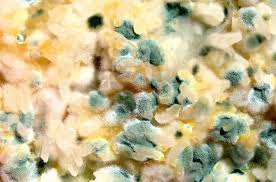What You May Be Missing When Considering Alzheimer’s and Dementia Treatments

In this blog, you will learn:
- The current approach to treating Alzheimer’s and dementia by reducing amyloid plaque in the brain is not effective
- Newer research says that the root cause(s) of Alzheimer’s and dementiais likely some type of infection or biotoxin exposure i.e., to mold or Lyme disease
- Screening for biotoxin exposure, and treating it if present, can help resolve or partially resolve some cases of Alzheimer’s and dementia
Do you suffer from dementia, poor memory or neurodegenerative symptoms? Do you have difficulty performing normal daily activities? Then this blog is for you, as we present the missing link to treating Alzheimer’s Disease and other forms of dementia (AD). Please read on for the details!
** Please note: If you want the longer, more detailed version of this article, then please click here **
To Read About Blog Topic, Scroll Down
Want To Work With Our Clinic?
Do you have a chronic or mystery illness that no one has been able to help you with? Are you simply wanting to re-connect with a healthier version of yourself? It’s Time To Finally Feel Better!
Alzheimer’s Disease Facts:
- Alzheimer’s Disease accounts for almost 70% of all dementia cases (Seaks CE, 2020).
- Alzheimer’s Disease is the 6th leading cause of death among adults (CDC, 2020).
- Your lifetime risk of developing AD is approximately 15%, assuming no prevention (Bredesen DE, 2016).
- AD is a slowly progressive neurodegenerative disease, leading to a decline in thinking and independence in personal daily activities.
- AD leads to degeneration of cells in the brain and neuroinflammation.
- AD is caused by interactions between genes and the environment. Multiple factors cause cognitive decline, such as increasing age, genetic factors, head injuries, vascular diseases, infections and environmental factors (Breijyeh Z, 2020).
- Each Alzheimer’s patient has their own unique set of triggers that must be identified and addressed.
Old School Thinking about Alzheimer’s Disease:
AD has been historically looked at from the “amyloid cascade hypothesis” (Fulop T, 2018). The disease is characterized by the presence of beta amyloid (Aβ) plaques in the brain (Seaks CE, 2020). It is thought that the amyloid plaques come first. They are produced pathologically and are the cause of AD (Fulop T, 2018). The plaques accumulate, cause neuronal death (i.e., neurodegeneration) and neuroinflammation (Fulop T, 2018). Current conventional medical treatment focuses on breaking down these amyloid plaques.
However, this approach has been not been successful. Clinical trials to decrease Aβ plaques have not worked and there is currently no effective treatment for AD when following conventional medicine (Seaks CE, 2020). This is because the amyloid plaques are not the root cause of AD. They are a symptom, and as we will see later, are even a protective measure against the true root cause(s) of AD.
What the New Research says: Is Alzheimer’s an Infection?
The new paradigm to view AD is the “infection hypothesis” or even the “immune system dysregulation hypothesis” (Fulop T, 2018). The infection hypothesis explains why it is that AD develops over decades before clinical symptoms appear (Fulop T, 2018).
Amyloid plaque is produced in reaction to microorganisms that attack the brain, in response to a threat (Fulop T, 2018). Amyloid is an antibacterial, antifungal and antiviral agent that is part of the immune system. It can inactivate invading pathogens (Fulop T, 2018). Aβ is not the cause of AD but actually, a defense reaction (Fulop T, 2018).
-> Infection (by a biotoxin, virus, bacteria or other) may be the Root Cause(s) of AD (Seaks CE, 2020)
As you know, in Functional Medicine, we are always looking for the root cause(s) of any condition. The key root cause in some AD cases may be an underlying infection. This may be a missing link to treating Alzheimer’s.
Type 3 Alzheimer’s Disease
There are different types of AD. One type, called Type 3, is caused by exposure to specific toxins, usually through inhalation, and is sometimes called inhalational Alzheimer Disease (IAD) (Bredesen DE, 2016). It is often due to Chronic Inflammatory Response Syndrome (CIRS), which results from biotoxin illness (mold illness or Lyme disease) (Bredesen DE, 2016).
Type 3 is very different from the other Types of AD (Bredesen DE, 2016):
- Onset is typically younger (late 40s to early 60s)
- Family history is typically negative
- Symptom onset usually follows a period of great stress, sleep loss, anesthesia, menopause/andropause, often depression
Biotoxins are toxic biological agents, which come from either plants or animals. Biotoxin exposure can often lead to Chronic Inflammatory Response Syndrome (CIRS). We know that biotoxins are associated with a broad range of symptoms, including cognitive decline (Bredesen DE, 2016).
The Biotoxins that can cause CIRS include:
- Mycotoxins or molds, such as Stachybotrys, Penicillium, or Aspergillus, present in water-damaged buildings
- Tick-borne pathogens that cause Lyme disease, such as Borrelia burgdorferi or spirochetes bacteria
- Aqua toxins, such as the algae dinoflagellates
What exactly is CIRS?
Chronic Inflammatory Response Syndrome (CIRS) is a progressive, multi-symptom illness that results from exposure to biotoxins. The systemic inflammation can affect any organ system of the body. People typically have cognitive symptoms; memory loss, mood disorders, brain fog, loss of executive function and fatigue.
Diagnosing CIRS can be difficult. Patients with CIRS are often misdiagnosed as having depression, anxiety, post-traumatic stress disorder, Alzheimer’s, Parkinsons, allergies, fibromyalgia or chronic fatigue syndrome.
Type 3 Alzheimer’s disease is one way that CIRS can present. It depends on a person’s genetics, how genes are expressed and the effect of epigenetic factors, such as exposure to biotoxins (Bredesen DE, 2016). Symptoms usually include cognitive decline, executive dysfunction, depression, hypozincemia, hypersensitivity to stress and HPA axis dysregulation (Bredesen DE, 2016). People with Type 3 AD have a history of significant biotoxin exposures (Bredesen DE, 2016).
What is the Solution?
It is not clear why AD occurs in some CIRS patients but not in all. Genetics may play a role. Or specific mycotoxins or biotoxins may predispose this particular manifestation of CIRS. Other contributing factors like metal toxicity, stress or HPA axis dysfunction may increase the risk of AD due to CIRS (Bredesen DE, 2016).
Patients with Type 3 AD should be tested for CIRS and biotoxin exposure. This is relatively straight forward and can be done following the Shoemaker protocol. Other toxins, in particular, heavy metals (mercury, copper, etc.) should also be considered, as the amyloid plaque build-up in the brain may be protective against these toxins.
If biotoxin exposure is established, it is critical to eliminate exposure and treat the body for these toxins. Following an AD treatment that simply reduces amyloid plaque would actually be even more dangerous for brain health as the body’s natural defense against the toxins would be removed without addressing and eliminating the root cause. This is where Functional Medicine really shines and can help to find and resolve the root cause(s) of any condition. It is especially relevant in this case of Type 3 AD as a result of CIRS due to biotoxin exposure.
Dr. Ritchie Shoemaker is a leading expert in CIRS and its treatment. According to Dr. Dale Bredensen, a leading expert in AD and its treatment, patients with Type 3 AD should be screened for CIRS. Then they should follow the Shoemaker protocol to resolve their CIRS, which in turn will partially or perhaps fully, resolve Type 3 AD, depending on the specific case (Bredesen DE, 2016). Improvement in cognitive decline has been routinely observed in the treatment of CIRS with the Shoemaker Protocol (Bredesen DE, 2016).
** Please stay tuned for our next Blog! **
Are You Suffering From A Chronic Illness?
Does your current health situation look like this…
- Do you feel that you have tried many things and either nothing works, or the treatment does not hold?
- Have you been told that there is nothing that can be done to reverse your illness and you just need to manage symptoms?
- Does your illness impact your work, your family, your happiness and your social life?
We specialize in finding answers and solutions for complicated chronic illness when people feel like they have tried everything. If this sounds like you, book a free call with us to see if we are the right fit for your health goals.
Dr. Miles has spoken for the following organizations:

















